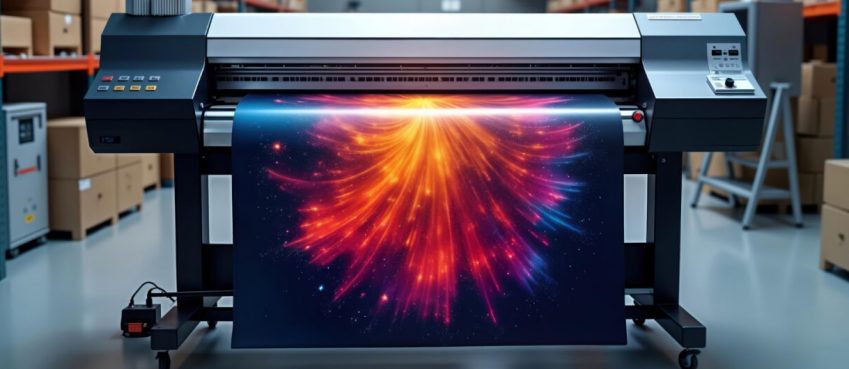
Apple is continuously dominating the market with the leap of their breathtaking gadgets Apple Pencil 2nd Generation as an example.
Have you ever wondered how Apple pencil works? What’s the technology behind its working?
Indeed, the Apple pencil delivers undoubtedly precision and industry-leading low latency, making it an excellent companion for drawing, sketching, coloring, taking notes, etc.
What is not imagined, can be drawn through Apple Pencil 2nd Generation when used with iPad Pro 12.9-inch (6th generation) and iPad Pro 11-inch (4th generation).
Let’s understand a bit about the technology working behind the Apple Pencil – that delivers precision, at every moment.
Also read: How To Detect AI Writing Confidently? (14 Ways)Table of Contents
What Is Apple Pencil?
Apple Pencil is an innovative wireless stylus pen that infers low-latency touches and reacts quickly on the surface (iPad tablets) used for taking notes, marking up PDFs, sketching, coloring, and drawing.
When it is in hand, it feels easy and natural to use as a pencil.
Though it’s not made up of Wood and Graphite, it uses an ultra-low-power STM32L151UCY6 device featuring Arm Cortex-M3 MCU running at 32 MHz with 64 KB of flash memory.
Besides this, the Apple Pencil also uses a magnetic entity, meaning it has a magnetic top with a magnetic cap that helps to stick at both corners next to the force touch trackpad and speakers.
You can call it the ‘Magnetism of Apple Pencil’
How Does Apple Pencil Work?
Most people don’t know how the apple pencil works exactly. The Apple Pencil reads and functions based on the three following data(s):
👉 Pen tracking aka path
👉 Force measurement aka pressure sensitivity
👉 Orientation measurement aka tilt sensitivity
And we will learn each of them in detail.
Pen Tracking (Path)

Tracking of Stylus or pen tracking is the first primitive data indulged in the functioning of the Apple Pencil. This refers to tracing the movement of the Apple Pencil.
You would be flaunted to know that the tracking of the pen over the surface works by auditing the location of the Apple Pencil about 240 times in a second.
This scan helps ensure more accurate pen tracking information. That means the occurrence of tracking pass-over is very, very less.
Another reason for the accurate tracing of the stylus could be the surface of the iPad is meaningfully designed to accept both the stylus and hand input. This exception is absent in other Apple devices such as iPhones or Macs, making it incompatible with the Apple Pencil.
Force Measurement (Pressure Sensitivity)
Measuring the hand force or calculating pressure sensitivity is the second important data required for the Stylus.
To do this, the stylus incubates a hyper-robust force sensor that calculates pressure information (varying as hard as you press the stylus) to result in a more mesmerizing drawing experience.
The calculation of force applied on the stylus is trickier than it appears. The force sensor resides above the stylus point, measures the pressure applied on the surface, and data is then processed and sent wirelessly to the tablet.
The force sensor is responsible for analyzing the variation of pressure i.e. three-dimensional force calculation; Axial force, Radical force, and Normal.

Certainly, this allows the stylus to measure the accurate force plus an exact angle to deliver a precise experience while writing or sketching.
For calculating and reading angle, there’s another sensor used. Read more in the next heading.
Orientation Measurement (Tilt Sensitivity)
Tilt detection or orientation measurement is the final data to interpret in the working of the Apple Pencil.
So, how does tilt sensitivity work?

To calculate tilt shifting movement, the stylus uses tilt sensitivity and measures the orientation of the stylus relative to the surface.
Thanks to the industry-leading low latency, the stylus can study and react quickly to the tilt data, resulting in using the stylus with varying angles.
Besides this, there is more complex data used for the calculation of the angle of the tip.
Before going into the details, the Apple Pencil consists of two electrodes. Firstly, on the tip called tip electrodes, and second above it called ring electrodes.
These two electrodes are responsible for natural pencil-like behavior. Whatever, here are the working steps:
- Detect capacitance at the first electrode.
- Detect capacitance at the second electrode.
- Correlate detected capacitances.
- Identify stylus orientation from the above result.
Capacitance is the ability of the material or device to store electric charge. Concerning capacitance, the tablet picks the stylus’s electrodes and then correlates the capacitances to measure the orientation of the Apple Pencil.
Also read: Top 10 IT Companies In The World By Market CapWhat’s The Technology Behind Apple Pencil 2nd Generation?
From the above scripts, we learned that the Apple Pencil has pressure sensitivity and angle detection with super accurate low-latency response that enables smooth marking on the screen.
It incubates global-tech leading STMicroelectronics STM32L151UCY6 Ultra-low-power 32-bit RISC ARM-based Cortex-M3 chip powering at 32 MHz with 64 KB of flash memory.
Apple Pencil 2nd Generation Technology
| Basis | Description |
|---|---|
| System on a chip | 32-bit RISC ARM-based Cortex-M3 |
| CPU power | STMicroelectronics STM32L151UCY6 Ultra-low-power MCU @ 32 MHz |
| Memory | 64-Kilobyte Flash |
| Power | 3.82 V 0.329 Wh |
| USB | Type C technology |
| Sensors | Force sensor and tilt sensor |
What Is The Physics Of The Apple Pencil?
The physics of the Apple Pencil involves various sensors and technologies. Indeed, the Apple Pencil functionality is based on a combination of hardware and software technologies that makes it intelligently effective and responsive in performance.
Because the exact details of the Apple Pencil’s internal components are proprietary, I have discussed some of the general physics and technology involved:
Pressure Sensitivity: Well the stylus uses pressure sensors to detect how hard the user is pressing on the screen. This feature allows for varying line thickness and shading in drawing, etc.
Low Latency: The Apple Pencil 2nd Generation is designed on top of industry-leading low-latency response that greatly enhances a natural and responsive feel when drawing or writing.
Active Digitizer Technology: This technology allows for precise tracking of the Pencil’s position on the screen, ensuring accurate drawing and writing.
Best Alternative To Apple Pencil
In case you are looking for Apple pencil alternatives, you can consider the following options. You can save some serious money on the best Apple Pencil alternatives.
1. Logitech Crayon

Compatible Devices: iPad 6th and 7th generation, iPad Air 3rd generation, iPad mini 5th generation, iPad Pro 3rd generation 11-inch and 12.9-inch.
Features: Similar to the Apple Pencil, the Logitech Crayon offers palm rejection and tilt sensitivity. It’s a more affordable option compared to the Apple Pencil.
2. Adonit Pixel Pro
![]()
Compatible Devices: iPads (various models).
Features: Pressure sensitivity, palm rejection, and programmable shortcut buttons for added functionality.
3. Samsung S Pen

Compatible Devices: Samsung Galaxy Tab and Note devices.
Features: The S Pen is designed for Samsung’s tablets and offers precise input, pressure sensitivity, and functionality specific to Samsung’s devices.
4. Surface Pen

Compatible Devices: Microsoft Surface devices.
Features: Designed specifically for Microsoft Surface tablets, the Surface Pen offers precision, tilt functionality, and customizable buttons.
Final Words On Apple Pencil
The Apple Pencil is one of a kind on its own and it has been designed and developed based on Apple’s proprietary technologies.
I have discussed some general tech curtains as much as possible to help you learn about the Apple Pencil technology.
For more information, it’s advised to visit the official Apple page.
Check out our more guides on Tech Reviews 👈
Thanks for reading this blog 🙂
Frequently Asked Questions
What is so special about Apple pencils?
Apple Pencils are particularly designed for use with iPads and are notable for several features. Precision and sensitivity, palm rejection technology, and low latency are a few of its prime characteristics.
What is the latest pencil innovation by Apple?
The Apple Pencil 2nd Generation is the latest wireless innovation in the stylus pen segment by Apple in the global market.
What is the physics of the Apple Pencil?
The Apple Pencil employs pressure sensors, accelerometers, and Bluetooth connectivity for precise drawing. Its design minimizes latency, providing a responsive and natural writing and drawing experience on iPads.
Which force makes a pencil work?
In general, the muscular force given by the hand to write or draw on a surface together with force-sensitivity technology and others makes a pencil work.
Is Apple Pencil a magnet?
Yes, the Apple Pencil has a magnetic top with a magnetic cap that helps to stick at both corners next to the force-touch trackpad and speakers.
Top 10 News
-
01
Top 10 Deep Learning Multimodal Models & Their Uses
Tuesday August 12, 2025
-
02
10 Google AI Mode Facts That Every SEOs Should Know (And Wha...
Friday July 4, 2025
-
03
Top 10 visionOS 26 Features & Announcement (With Video)
Thursday June 12, 2025
-
04
Top 10 Veo 3 AI Video Generators in 2025 (Compared & Te...
Tuesday June 10, 2025
-
05
Top 10 AI GPUs That Can Increase Work Productivity By 30% (W...
Wednesday May 28, 2025
-
06
[10 BEST] AI Influencer Generator Apps Trending Right Now
Monday March 17, 2025
-
07
The 10 Best Companies Providing Electric Fencing For Busines...
Tuesday March 11, 2025
-
08
Top 10 Social Security Fairness Act Benefits In 2025
Wednesday March 5, 2025
-
09
Top 10 AI Infrastructure Companies In The World
Tuesday February 11, 2025
-
10
What Are Top 10 Blood Thinners To Minimize Heart Disease?
Wednesday January 22, 2025







